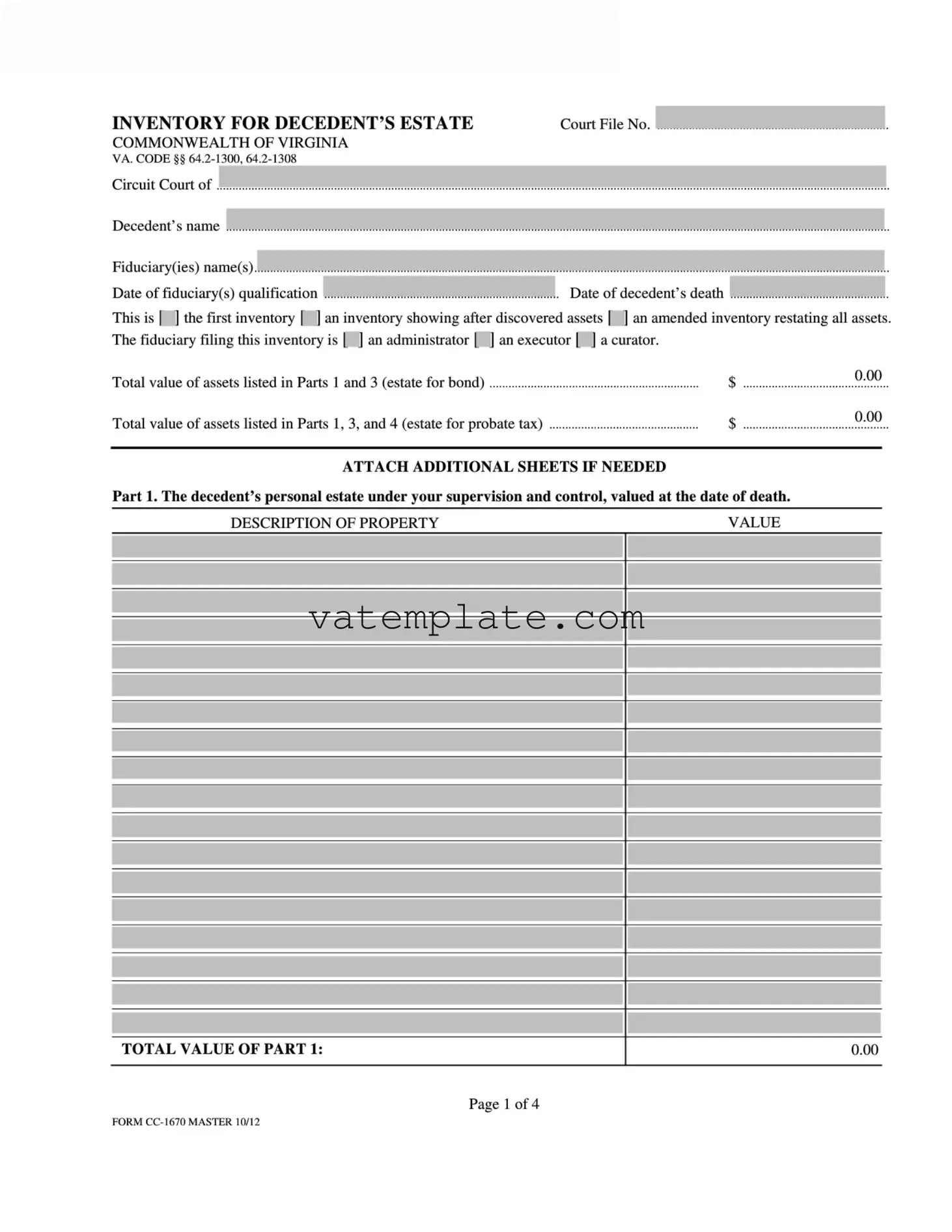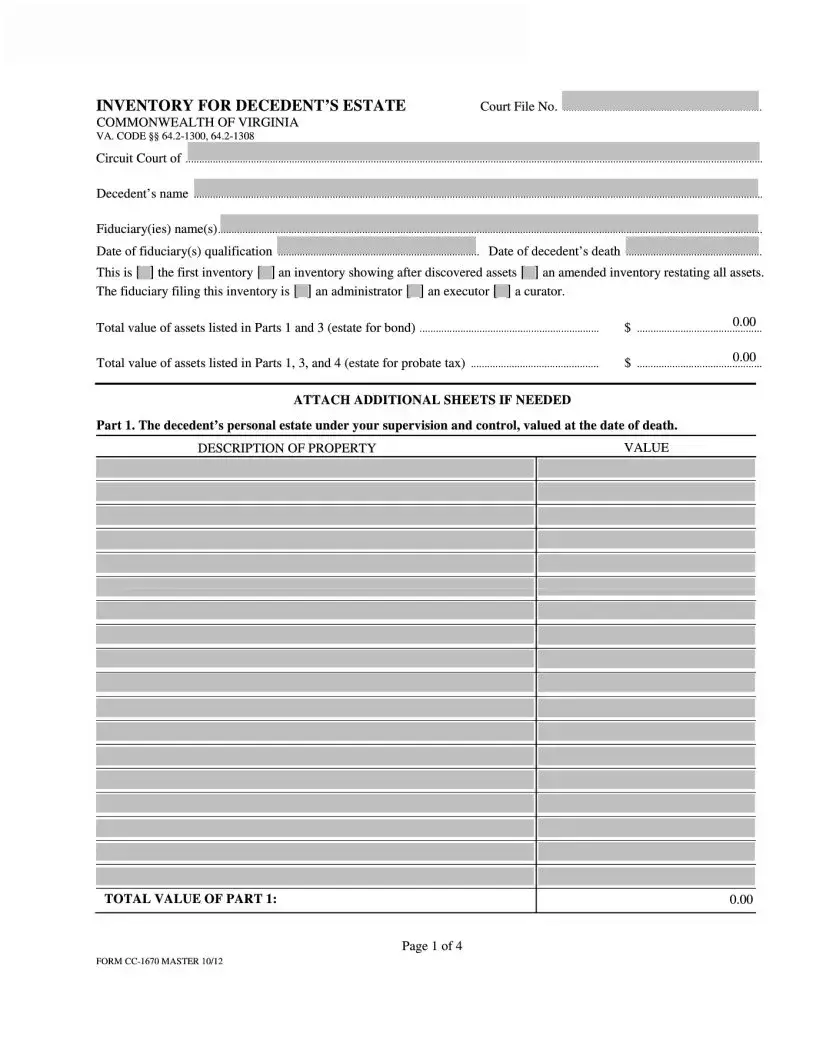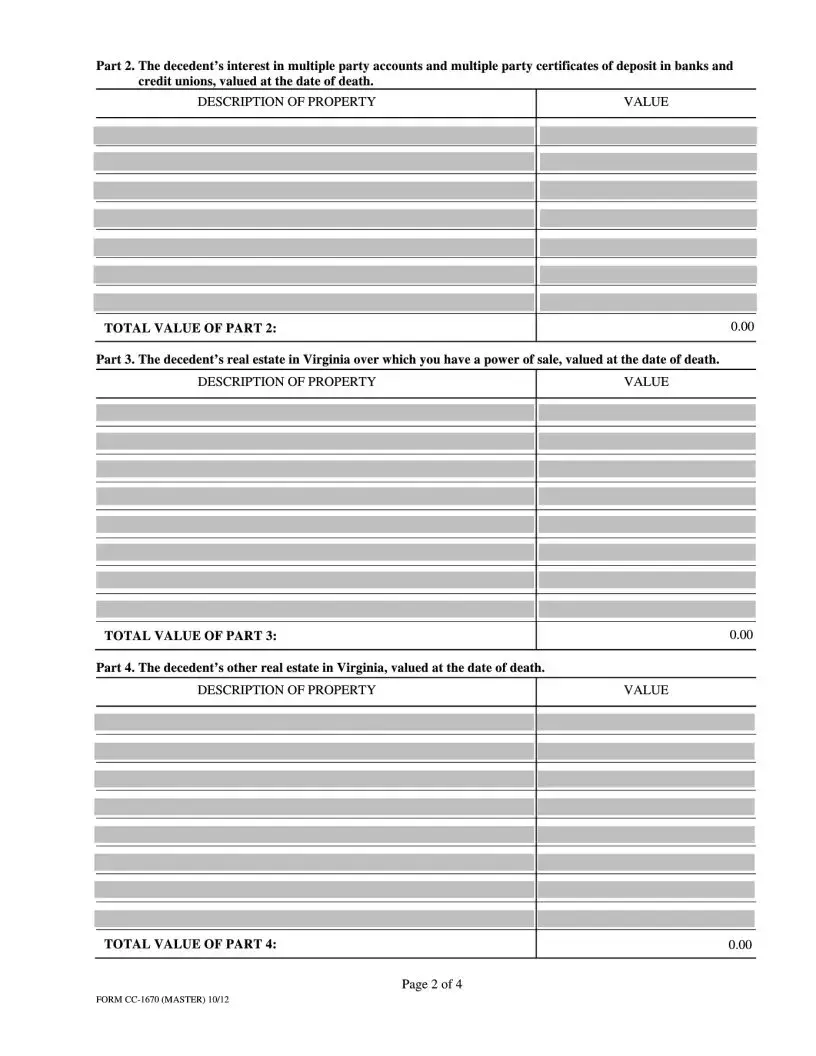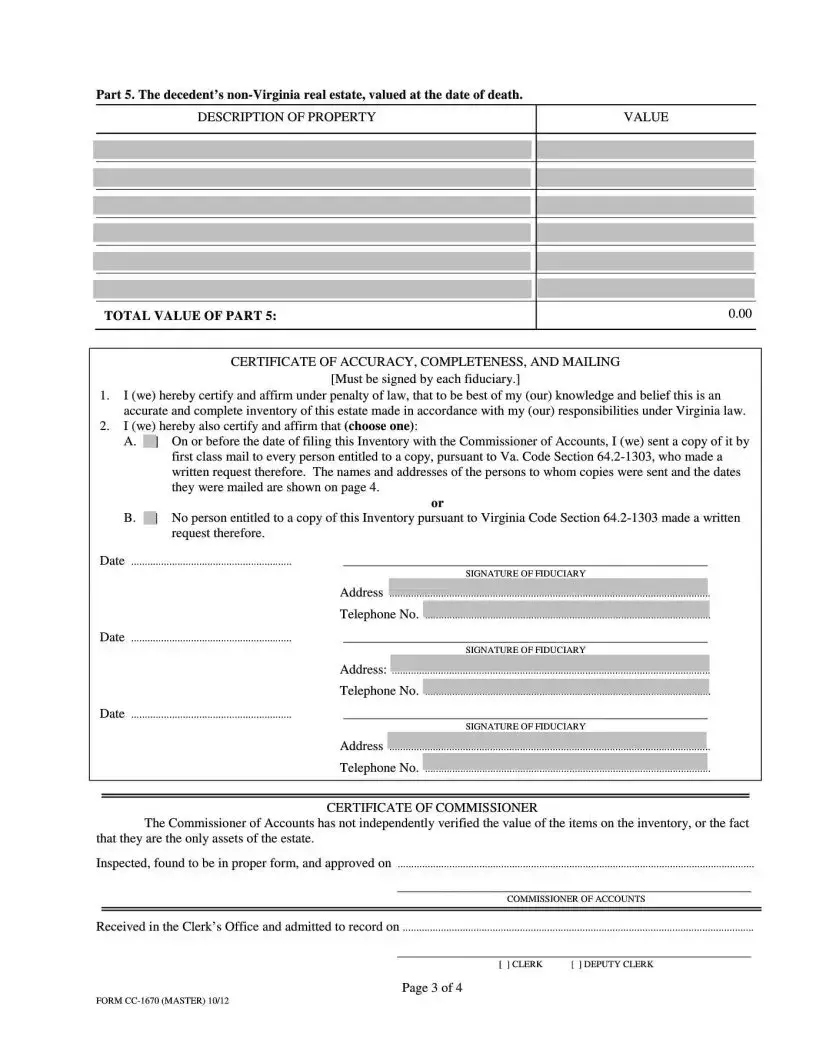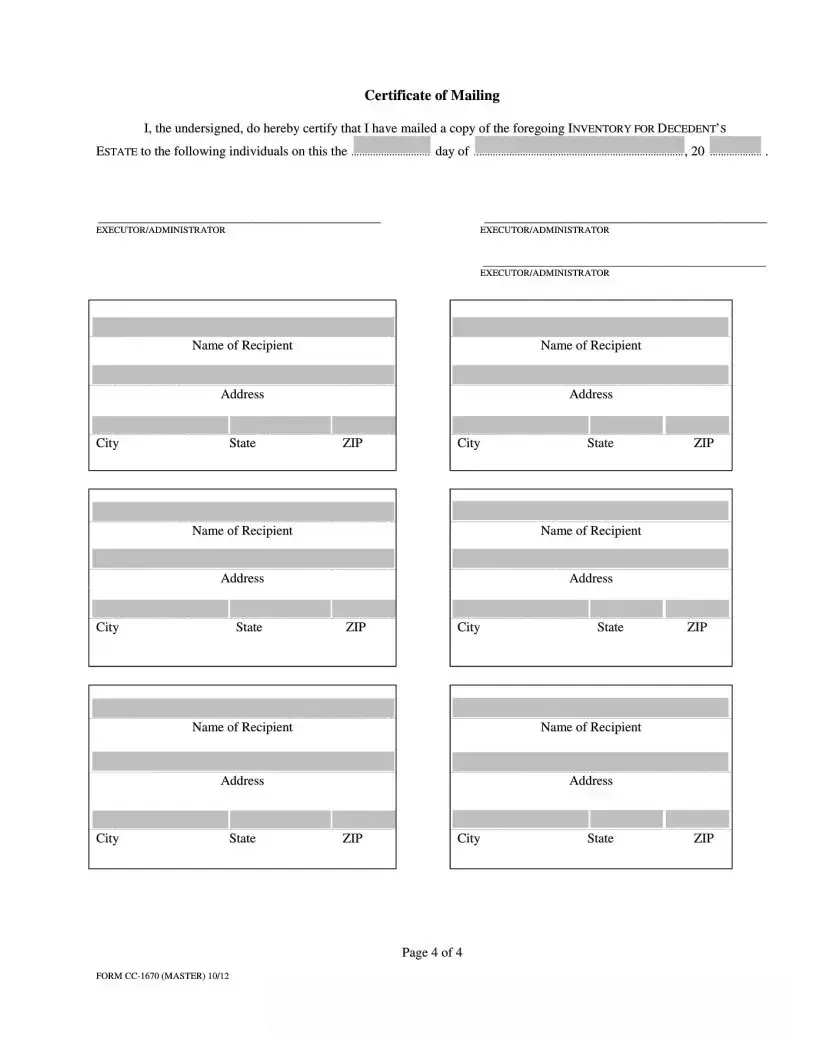The Virginia Estate CC 1670 form, often referred to as the Inventory and Appraisement form, is an official document used in the Commonwealth of Virginia. It is designed for the executor or administrator of an estate to detail all the assets owned by the deceased at the time of their death. This comprehensive list includes real estate, personal property, stocks, bonds, and any other assets. Its purpose is to ensure a clear understanding of the estate's value for probate and tax purposes.
Individuals serving as executors or administrators of estates in Virginia are required to file the CC 1670 form. This responsibility falls on them following the death of the property owner, as part of the legal process to manage and settle the deceased's estate according to the will or state law, if there's no will.
The filing timeline for the CC 1670 form varies; however, it is typically due within four months of the executor or administrator being appointed by the court. It's important to check specific deadlines with the local probate court to avoid any penalties or delays in the estate administration process.
The form can be obtained from the Virginia's Judiciary's official website or by visiting the local probate court. Ensure to use the most current version of the form to comply with the latest legal requirements.
Completing the CC 1670 form requires detailed information about the deceased's assets at the time of death, including:
-
Real estate details (location, value)
-
Personal property (vehicles, jewelry, furniture)
-
Financial assets (bank accounts, stocks, bonds)
-
Other assets belonging to the deceased
Accuracy is crucial, as this document plays an essential role in the probate process.
Yes, depending on the estate's complexity, additional documents may need to be attached to the CC 1670 form, including but not limited to:
-
Appraisal reports for high-value items
-
Deeds or titles for real estate and vehicles
-
Statements for financial accounts
Check with the local probate court for specific requirements related to your case.
The completed CC 1670 form, along with any required attachments, should be submitted to the appropriate local probate court in Virginia. It's advisable to keep a copy for your records and to consult with a probate attorney to ensure compliance with all legal requirements.
Upon filing, the probate court reviews the inventory and appraisement to ensure accuracy and completeness. The court may request further information or corrections. Once approved, the form becomes part of the official record for the estate, guiding the distribution of assets and resolution of debts and taxes.
Yes, if additional assets are discovered or if there were inaccuracies in the initial filing, an amended CC 1670 form can be submitted to the probate court. The process for amending the form is similar to the initial filing and must include any new information or corrections.
Help with the CC 1670 form can be obtained from several sources, including:
-
A probate attorney experienced in Virginia estate law
-
The local probate court
-
Legal aid organizations in Virginia
It's essential to seek professional guidance to navigate the complexities of estate administration and ensure compliance with state law.
